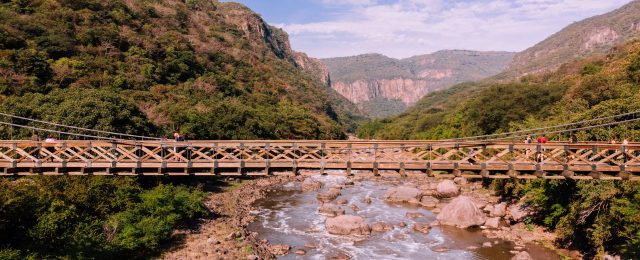As clear as water: steps to advance water stewardship

Water is one of the clearest ways to observe how people and nature are connected. Think of a river starting at the top of a mountain, flowing downhill through cities and communities until it reaches the ocean. The water that sustains ecosystems at the top of the mountain is the same one that enables communities at the bottom to do their everyday activities. It’s the same water that reaches coastal communities before it becomes part of the ocean.
Being the precious resource that it is, the water crisis is concerning. By 2023, a quarter of the population faced extremely high water stress, meaning that they lived in regions where even a short-term drought would put them in danger of running out of water. Unfortunately, the situation is expected to worsen. By 2050, a billion more people are projected to live in these conditions. The effects of water shortages extend beyond the evident impacts on human health and livelihoods, as an insufficient water supply can lead to economic decline and energy outages.
The private sector is the largest user of freshwater resources in the world, with agriculture accounting for roughly 70% of freshwater withdrawals. However, company action so far has been deficient. The last iteration of the Nature Benchmark highlighted the need for companies to increase meaningful actions to avoid negative impacts on water resources. When it comes to addressing the water crisis, companies have mostly focused on reducing their water withdrawal, largely ignoring water quality. While 8.5% of companies set targets to reduce their overall water withdrawal and reported progress against them, less than half (3.9%) did the same with their water pollutants.
Protecting freshwater resources is not as simple as withdrawing less water; it should rather follow a more holistic approach. This becomes clear when we remember how interconnected water systems are. Polluting a river at the top of the mountain will inevitably impact the ability of communities down the river to access clean, safe water. Rapidly depleting surface water can lead to biodiversity loss, ultimately affecting food supplies. Poor rainwater management can lead to catastrophic floods. This is not to say that a company should not reduce its water withdrawal all around its operations; it is still imperative.
Protecting water must go beyond water quantity; companies must ask themselves the following questions in order to comprehensively assess water risks:
- Is the water a company discharges clean? Is it polluted?
- How does a company’s water use impact ecosystems? How does it impact people’s health?
- Are the company’s actions hindering people’s access to clean water?
Growing awareness of these interconnected issues led to a shift in recent years. Initiatives to help companies address the water crisis changed focus from global solutions to more localized ones. To simplify, water management has evolved into water stewardship – an approach that contextualizes the risks that a watershed faces, helping companies use water in a way that is socially equitable and environmentally sustainable.
Different organisations have developed guidance and frameworks to help companies advance water stewardship. At the 2023 UN Water Conference, the first of its kind in 30 years, organizations like the Alliance for Water Stewardship (AWS), The Nature Conservancy (TNC), the World Resources Institute (WRI), the World Wildlife Fund (WWF), Science Based Targets Network (SBTN), the Climate Disclosure Project (CDP), and the CEO Water Mandate came together during a side event to discuss the next steps toward water stewardship. The organisations in attendance focused on the need for companies to set targets that considered contextual risks that specific watersheds faced. These targets, guided by SBTN’s methodology, would ensure that water resources are comprehensively protected where it’s most needed.
Although the development of these targets faced some challenges, the good news is that progress is already happening. SBTN recently conducted a pilot test with 17 companies to set contextual freshwater targets and reported that, as of September 2024, 10 companies got validation for at least one target. For instance, Kering, the top performer of the latest Nature Benchmark, has set a target to reduce its water withdrawals from its operations in a basin in Tuscany facing water scarcity, while also engaging with local communities to prevent, mitigate, and remediate potential negative impacts.
The guidance and frameworks that the aforementioned organisations provide incredible steps to enable the private sector to achieve water stewardship. Mirroring what was discussed in our latest blog about biodiversity initiatives, although these guidelines are separate, they were developed collaboratively to reach the same goal. The number of guidelines may be overwhelming, but companies may use them in combination to strengthen their sustainability approach.
So, what can we expect in the near future? For starters, the next iteration of the Nature, Food and Agriculture, and Urban benchmarks will be published in 2026. WBA’s assessments of companies’ water use and pollution will consider their first steps towards comprehensive water risk assessments, ones that consider local environmental and societal impacts. The benchmark results will show how collective efforts with the private sector start to pay off.
It’s time for companies to take action. The pathway forward is now clear, and the water crisis is only getting worse.